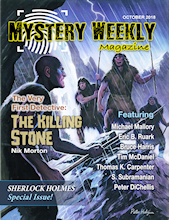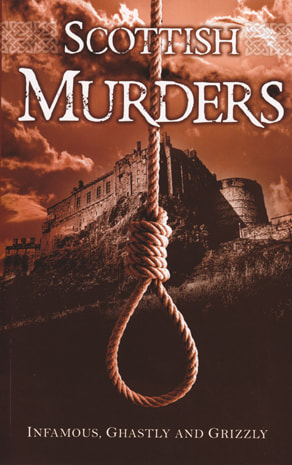 The Beekeeper's Dilemma Eric B. Ruark Mystery Weekly Magazine An elderly bee keeper makes the rounds of a small British village with his mongrel dog, delivering jars of honey. He comes across a crime scene. The old man takes a keen interest. It wasn't until the end that I realized clues to another mystery were being scattered along the way. Nicely written. Case Study on the Principles of Morals and Legislation Aislinn Batstone Shhhh... Murder! Set in Sydney, Australia, the body of a stranger in a university library disrupts a professor's day. A spilled baggie of cocaine adds to the mystery. A library book the professor is certain she did not check out ends up in her tote bag. There is a ticking clock as a class approaches which two of her suspects attend. Kate faces an ethical dilemma with her law students, and works out the solution with the aid of legal precedent.  Scottish Murders - Infamous, Ghastly and Grizzly by Lisa Wallis and Derek Wright covers a lot of historical ground. The first crime is the murder of David Rizzio, a confidant of Mary Queen of Scots in 1566. The last case discussed is in 1977. The authors go for sensational and well-known crimes. Mystery and crime authors will be familiar with Burke and Hare. The men murdered people to supply a professor with bodies for an anatomy class. Entire books have been written about them. The term "burking" - murdering by smothering - came from Burke. They had to kill people leaving the least amount of damage, and evidence. They were still caught, but not until after a horrifying crime spree. Another case of particular interest to mystery writers and readers is that involving Oscar Slater. Falsely accused of murder, Slater served 18 1/2 years, probably due to a combination of police incompetence and prejudice against a foreign Jew of questionable character. The author of the Sherlock Holmes mysteries, Arthur Conan Doyle, argued for Slater's innocence. Each of the twenty cases is covered in a condensed manner. What I found most interesting was the revelation of the cultural issues of the day. In the course of telling the tales, the authors discuss how hanging went from an entertaining public event attended by thousands to a solemn private matter done behind closed prison doors, to the abolition of hanging.
0 Comments
Your comment will be posted after it is approved.
Leave a Reply. |
Subscribe to this blog: |
Proudly powered by Weebly
 RSS Feed
RSS Feed